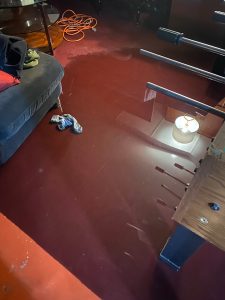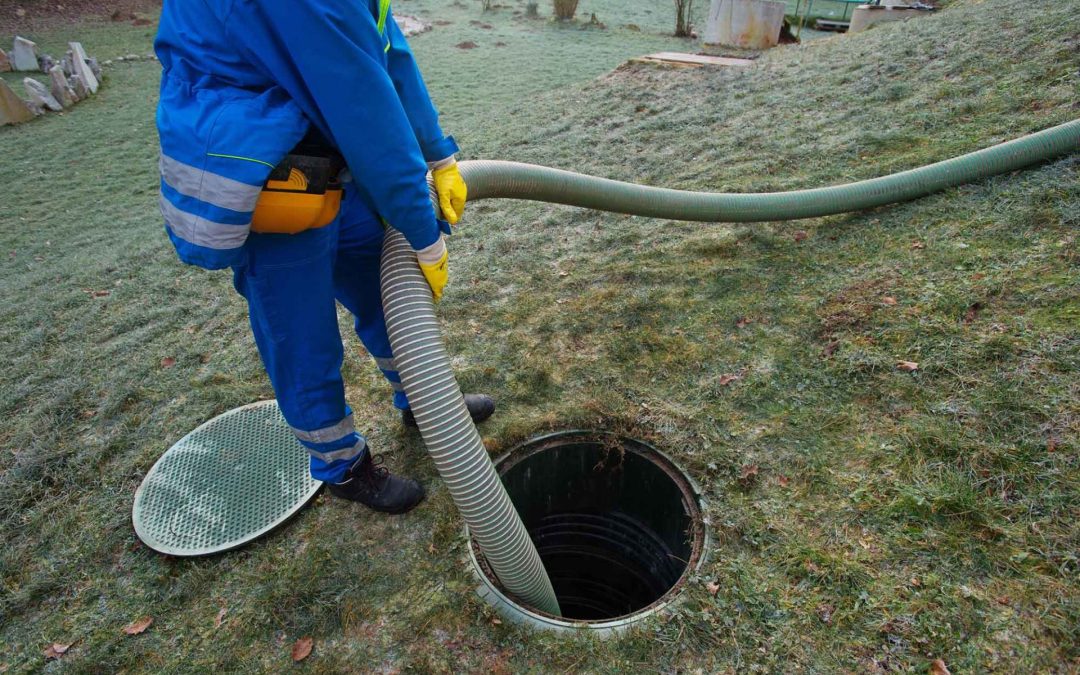Sewage Cleanup for Chicago Residents and Businesses
Discovering sewage backup in your Chicago home can be a homeowner’s worst nightmare. Not only is it unsanitary and unpleasant, but it also poses serious health risks and can cause significant damage to your property if not addressed promptly. Knowing what steps to take immediately after discovering sewage backup is crucial to minimize the damage and ensure the safety of your family and home. In this guide, we’ll outline the necessary actions to take when faced with this unfortunate situation.
Prioritize Safety Above All Else
Upon discovering sewage backup, prioritizing safety for yourself and your family is paramount. Sewage backup poses significant health risks due to the presence of bacteria, viruses, and other pathogens. Therefore, taking precautions to protect yourself from contamination is essential.
Here are some steps that you should take to prioritize safety:
- Turn Off Electricity – If the sewage backup has affected any electrical outlets or appliances, the first step is to turn off the electricity at the main breaker. Water and electricity are a dangerous combination, and sewage backup can potentially cause short circuits or electrical fires. By cutting off the power supply, you mitigate the risk of electric shock and further damage to your home.
- Wear Protective Gear – Before attempting to clean up the sewage, it’s crucial to wear appropriate protective gear to shield yourself from exposure to harmful contaminants. This includes:
- Rubber gloves: Protect your hands from direct contact with sewage and prevent the spread of bacteria.
- Boots or waterproof shoes: Keep your feet dry and protected from contaminated water and sharp objects.
- Face mask or respirator: Shield your mouth and nose from inhaling foul odors and airborne pathogens present in sewage.
- Protective clothing: Wear long sleeves and pants to minimize skin contact with sewage and prevent contamination.
- Keep Children and Pets Away – Ensure that children and pets are kept away from the affected area. Sewage backup can contain hazardous substances that pose a serious health risk, especially to young children and animals who may accidentally ingest contaminated water or come into contact with contaminated surfaces. Keep them in a safe, separate area until the cleanup process is complete and the area has been thoroughly sanitized.
- Avoid Direct Contact – Refrain from direct contact with sewage whenever possible. Avoid touching contaminated surfaces or items with bare hands and use tools or equipment to handle cleanup tasks safely. Minimizing contact with sewage reduces the risk of exposure to harmful pathogens and prevents the spread of contamination to other areas of your home.
- Seek Medical Attention if Necessary – If you or anyone in your household experiences symptoms of illness after coming into contact with sewage, seek medical attention immediately. Symptoms may include nausea, vomiting, diarrhea, fever, or skin irritation. Prompt medical treatment can help prevent complications and ensure proper management of any sewage-related health concerns.

Steps to Take Immediately After Discovering Sewage Backup in Your Chicago Home
Stop Water Flow
Taking immediate steps to stop the flow of sewage is crucial to prevent additional damage to your property and minimize cleanup efforts. Locating the main water supply valve in your home and shutting it off effectively stops the flow of water into the affected area, preventing the sewage backup from worsening and containing the contamination within the existing area.
In addition to shutting off the water supply, blocking the sewage flow by placing sandbags or towels around the area where the backup is occurring can help contain the sewage and prevent it from spreading to unaffected areas of your home. By taking these proactive measures, you can mitigate the extent of the damage and minimize the time and resources required for cleanup and restoration.
Call a Professional
Dealing with sewage backup requires specialized knowledge, equipment, and expertise that only professional sewage cleanup services can provide. Contacting a professional sewage cleanup company is essential to ensure thorough and safe cleanup and restoration of your home.
When selecting a sewage cleanup company, it’s crucial to find a licensed and experienced specialist in the Chicago area. Additionally, choosing a company that offers emergency response services is highly recommended, as time is of the essence in sewage cleanup to prevent further damage and minimize health risks. The Cleanup Guys are here for you in your need for sewage cleanup in the Chicago area.
By entrusting the cleanup and restoration process to professionals, you can have peace of mind knowing that your home is in capable hands and that the cleanup will be conducted efficiently and effectively, minimizing disruption to your life and ensuring the safety and well-being of your family.
Document the Damage:
Having documentation of the damages is extremely important when it comes to sewage disasters in your home or business. Here are 3 reasons you want to document the damage well.
- Insurance Claims: Documenting the damage serves as crucial evidence when filing insurance claims. Insurance companies require proof of the extent of the damage to accurately assess the coverage needed for repairs and restoration. Clear photographs, videos, and detailed inventories provide concrete evidence of the loss, facilitating the claims process and ensuring that you receive fair compensation for the damage caused by the sewage backup.
- Legal Purposes: Documentation of the damage can also be valuable for legal purposes, especially if disputes arise regarding liability or compensation. Detailed documentation serves as a record of the incident and can be used to support your case in legal proceedings, such as disputes with landlords, contractors, or insurance companies. Having thorough documentation can strengthen your position and increase the likelihood of a favorable outcome in legal disputes related to sewage backup incidents.
- Restoration Planning: Documenting the damage allows for a comprehensive assessment of the scope of cleanup and restoration efforts needed to restore your home to its pre-loss condition. By thoroughly documenting the extent of the damage, including structural damage, water levels, and contamination levels, restoration professionals can develop a detailed restoration plan tailored to address the specific needs of your property. This ensures that cleanup and restoration efforts are targeted and efficient, minimizing downtime and disruption to your life while ensuring that your home is restored safely and effectively.
Ventilate the Area:
Proper ventilation of the affected area is essential to improve air quality, remove foul odors, and minimize the risk of respiratory issues associated with sewage backup. In addition to opening windows and doors to allow fresh air to circulate, consider using fans or air purifiers equipped with HEPA filters to facilitate air exchange and remove airborne contaminants. Ventilating the area effectively helps accelerate the drying process, reducing the risk of mold growth and creating a safer and more comfortable living environment.
It’s important to continue ventilating the area throughout the cleanup and restoration process to maintain optimal air quality and promote the efficient removal of contaminants. By prioritizing ventilation, you can mitigate the adverse effects of sewage backup on indoor air quality and create a healthier and more habitable living space for you and your family.
Clean and Disinfect:
Thorough cleaning and disinfection are critical steps in the sewage cleanup process to eliminate harmful bacteria and pathogens and restore a safe and sanitary environment. EPA-approved disinfectants should be used to sanitize surfaces contaminated by sewage, paying special attention to areas that have come into direct contact with sewage.
All surfaces, including floors, walls, furniture, and personal belongings, should be cleaned thoroughly to remove contaminants and prevent the spread of bacteria.
Additionally, any items that cannot be salvaged or thoroughly cleaned should be disposed of according to local regulations for proper disposal of hazardous waste and contaminated materials. By cleaning and disinfecting the affected areas promptly and effectively, you can minimize the risk of illness and ensure the safety and well-being of your family.
Here are 5 reasons, you should call The Cleanup Guys IMMEDIATELY if you discover sewage backup in your house.
- Expertise and Experience: Professionals have the expertise and experience to handle sewage backup situations safely and effectively. They are trained in proper cleanup and restoration techniques, including identifying and mitigating health hazards associated with sewage contamination. Their experience allows them to assess the extent of the damage accurately and develop a comprehensive plan for cleanup and restoration.
- Specialized Equipment: Professionals have access to specialized equipment and tools specifically designed for sewage cleanup. This equipment allows them to remove sewage and contaminated water efficiently, dry and dehumidify affected areas, and disinfect surfaces thoroughly. Attempting to clean up sewage backup without the appropriate equipment can be challenging and may result in incomplete cleanup, leaving behind harmful bacteria and pathogens.
- Health and Safety: Sewage backup poses significant health risks due to the presence of harmful bacteria, viruses, and other pathogens. Professionals prioritize health and safety by wearing protective gear and following strict safety protocols during cleanup and disinfection. They also have the knowledge and resources to properly dispose of contaminated materials according to regulations, minimizing the risk of exposure to hazardous waste.
- Prevention of Secondary Damage: Prompt cleanup and disinfection by professionals help prevent secondary damage such as mold growth, structural deterioration, and indoor air quality issues. Mold can begin to grow within 24-48 hours of water damage, so quick action is essential to prevent mold infestation. Professionals use advanced techniques to dry and dehumidify affected areas effectively, reducing the risk of mold growth and other long-term damage.
- Thorough Cleanup and Disinfection: Professionals ensure thorough cleanup and disinfection of all affected areas to eliminate harmful bacteria and pathogens. They use EPA-approved disinfectants to sanitize surfaces and remove contaminants, paying special attention to high-risk areas that have come into direct contact with sewage. Thorough cleanup and disinfection by professionals help restore a safe and sanitary environment, minimizing the risk of illness and ensuring the well-being of you and your family.

